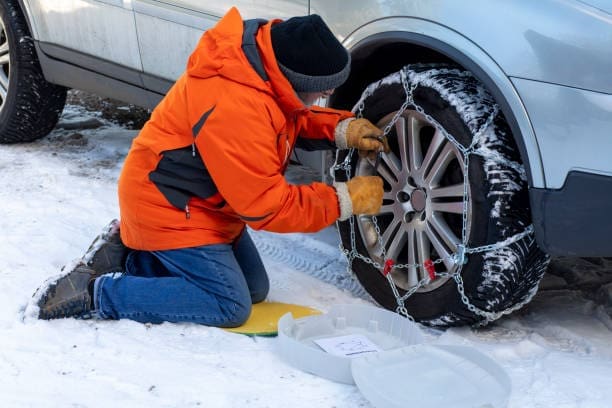A Step-by-Step Guide to Installing a Mileage Stopper, also known as an odometer blocker or odometer correction tool, in your Range can be a delicate task. This device is used to stop the odometer from recording mileage, which can be useful for various reasons, such as testing a vehicle or for legal uses in car rentals. It’s crucial to use these devices responsibly and within the boundaries of the law. In this step-by-step guide, we will walk you through the process of installing a mileage stopper in your Range.
Understanding Mileage Stoppers
Table of Contents
ToggleWhat is a Mileage Stopper?
A mileage stopper is an electronic device that interferes with the signals sent to the odometer, effectively stopping it from recording mileage while the vehicle is in motion. It is often used for legitimate purposes like maintaining the vehicle’s resale value during testing or ensuring accurate mileage records for rental cars.
Legal Considerations
Before proceeding with the installation, it’s essential to understand the legal implications. In many jurisdictions, tampering with the odometer is illegal and considered fraud if used to deceive buyers. Ensure that you are aware of and comply with the laws in your area.
Preparation for Installation

Gather Necessary Tools and Equipment
To install a mileage stopper, you will need the following tools and equipment:
- Mileage stopper device specific to your Range model
- Screwdrivers (Phillips and flathead)
- Trim removal tools
- Socket wrench set
- Electrical tape
- User manual for your specific mileage stopper device
Ensure Safety
Safety is paramount when working on your vehicle. Follow these precautions:
- Park the vehicle on a flat surface and engage the parking brake.
- Disconnect the battery to prevent any electrical accidents.
- Wear gloves and safety glasses to protect your hands and eyes.
Read the Manual
Before starting the installation, thoroughly read the user manual of your mileage stopper device. Each device may have specific instructions and safety warnings.
Step-by-Step Installation Guide
Step 1: Disconnect the Battery
To ensure safety and prevent any electrical short circuits, disconnect the negative terminal of the battery. This step is crucial before starting any electrical work on your vehicle.
Step 2: Access the Odometer
- Remove the Dashboard Trim:
- Use a trim removal tool to carefully pry off the dashboard trim pieces. Start with the edges and work your way around to avoid damaging the trim.
- Unscrew the Instrument Cluster:
- Locate the screws holding the instrument cluster in place. Use the appropriate screwdriver to remove these screws.
- Gently pull the instrument cluster out of the dashboard. Be cautious as it will still be connected by wiring harnesses.
Step 3: Identify the Odometer Wiring
- Consult the Wiring Diagram:
- Refer to your vehicle’s service manual or wiring diagram to identify the wires connected to the odometer. This step is critical to ensure you correctly install the mileage stopper.
- Locate the Correct Wires:
- Typically, the wires you need to intercept are behind the instrument cluster. These wires carry the signal from the vehicle’s speed sensor to the odometer.
Step 4: Install the Mileage Stopper
- Connect the Device:
- Following the instructions in the mileage stopper manual, connect the device to the identified wires. This usually involves splicing into the signal wire and connecting the device in series.
- Use electrical tape or heat shrink tubing to secure the connections and prevent any short circuits.
- Mount the Device:
- Find a suitable location behind the dashboard to mount the mileage stopper securely. Ensure it is away from any moving parts or high-heat areas.
Step 5: Test the Installation
- Reconnect the Battery:
- Reconnect the negative terminal of the battery.
- Start the Vehicle:
- Start your vehicle and observe the odometer. If the installation is successful, the odometer should not record any additional mileage while the vehicle is moving.
- Test Drive:
- Take the vehicle for a short test drive to ensure the mileage stopper functions correctly. Ensure that other dashboard functions are also working properly.
Step 6: Reassemble the Dashboard
- Reattach the Instrument Cluster:
- Carefully place the instrument cluster back into its position and secure it with the screws.
- Reinstall the Trim Pieces:
- Reattach the dashboard trim pieces by pressing them back into place. Ensure all clips and fasteners are securely engaged.
Step 7: Final Checks
- Verify the Installation:
- Double-check all connections and make sure everything is secure.
- Record the Installation:
- Keep a record of the installation, including any modifications made and the current odometer reading. This documentation can be useful for future reference or legal compliance.
Troubleshooting Common Issues

Mileage Stopper Not Working
If the mileage stopper is not functioning correctly, check the following:
- Ensure all connections are secure and properly insulated.
- Verify that you have connected the device to the correct wires.
- Consult the troubleshooting section of the mileage stopper manual.
Dashboard Malfunctions
If other dashboard functions are not working correctly after installation:
- Double-check the connections to the instrument cluster.
- Ensure no wires are pinched or damaged during the installation process.
- Reset the vehicle’s electronics by disconnecting and reconnecting the battery.
Maintenance and Monitoring
Regular Inspections
Periodically inspect the installation to ensure all connections remain secure and the device is functioning as intended. Look for any signs of wear or damage to the wires and connections.
Stay Informed About Legal Changes
Laws regarding odometer tampering can change. Stay informed about any legal updates in your area to ensure you remain compliant. Using a mileage stopper responsibly and legally is crucial.
Conclusion
Installing a mileage stopper in your Range can be a straightforward process if you follow the proper steps and precautions. Always prioritize safety and legality when undertaking such modifications. By carefully following this guide, you can successfully install a mileage stopper and ensure it functions correctly without compromising other vehicle systems.



